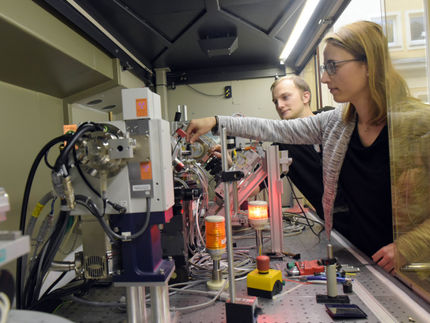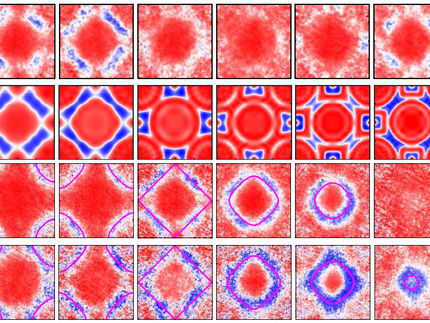Seeing quantum motion
Consider the pendulum of a grandfather clock. If you forget to wind it, you will eventually find the pendulum at rest, unmoving. However, this simple observation is only valid at the level of classical physics. However, quantum mechanics, state that nothing can quite be completely at rest.
A team of Caltech researchers and collaborators has found a way to observe - and control - this quantum motion of an object that is large enough to see. "In the past couple of years, my group and a couple of other groups around the world have learned how to cool the motion of a small micrometer-scale object to produce this state at the bottom, or the quantum ground state," says Keith Schwab, a Caltech professor of physics and applied physics, who led the study. "But we know that even at the quantum ground state, at zero-temperature, very small amplitude fluctuations - or noise - remain."
Because this quantum motion, or noise, is theoretically an intrinsic part of the motion of all objects, Schwab and his colleagues designed a device that would allow them to observe this noise and then manipulate it.
The micrometer-scale device consists of a flexible aluminum plate that sits atop a silicon substrate. The plate is coupled to a superconducting electrical circuit as the plate vibrates at a rate of 3.5 million Hertz. According to the laws of classical mechanics, the vibrating structures eventually will come to a complete rest if cooled to the ground state.
But that is not what Schwab and his colleagues observed when they actually cooled the spring to the ground state in their experiments. Instead, the residual energy remained.
"This energy is part of the quantum description of nature - you just can't get it out," says Schwab. "We all know quantum mechanics explains precisely why electrons behave weirdly. Here, we're applying quantum physics to something that is relatively big, a device that you can see under an optical microscope, and we're seeing the quantum effects in a trillion atoms instead of just one."
Because this noisy quantum motion is always present and cannot be removed, it places a fundamental limit on how precisely one can measure the position of an object.
But that limit, Schwab and his colleagues discovered, is not insurmountable. The researchers and collaborators developed a technique to manipulate the inherent quantum noise and found that it is possible to reduce it periodically. Coauthors Aashish Clerk from McGill University and Florian Marquardt from the Max Planck Institute for the Science of Light proposed a novel method to control the quantum noise, which was expected to reduce it periodically. This technique was then implemented on a micron-scale mechanical device in Schwab's low-temperature laboratory at Caltech.
"There are two main variables that describe the noise or movement," Schwab explains. "We showed that we can actually make the fluctuations of one of the variables smaller--at the expense of making the quantum fluctuations of the other variable larger. That is what's called a quantum squeezed state; we squeezed the noise down in one place, but because of the squeezing, the noise has to squirt out in other places. But as long as those more noisy places aren't where you're obtaining a measurement, it doesn't matter."
The ability to control quantum noise could one day be used to improve the precision of very sensitive measurements.
Original publication
Other news from the department science

Get the chemical industry in your inbox
From now on, don't miss a thing: Our newsletter for the chemical industry, analytics, lab technology and process engineering brings you up to date every Tuesday and Thursday. The latest industry news, product highlights and innovations - compact and easy to understand in your inbox. Researched by us so you don't have to.





























































